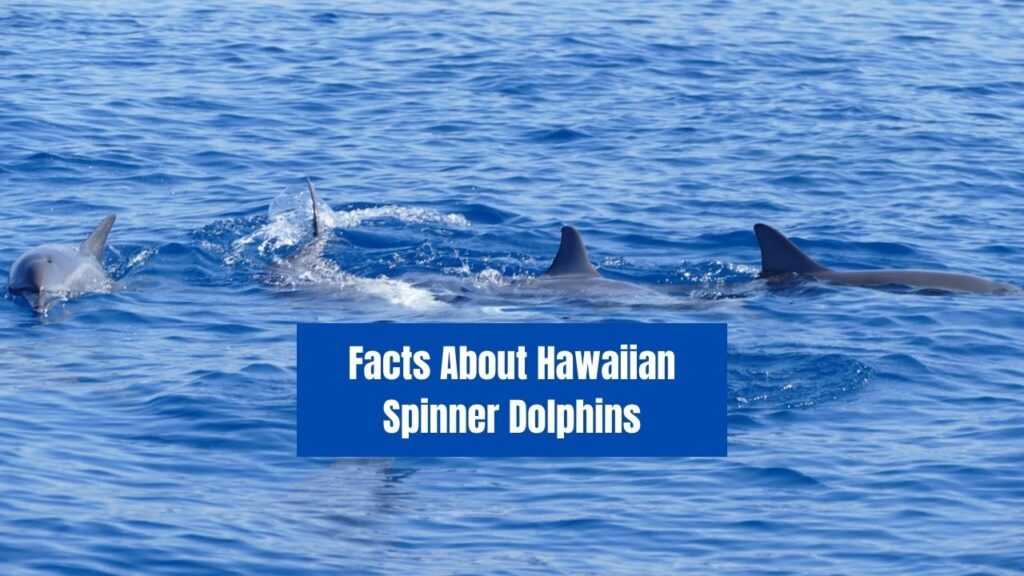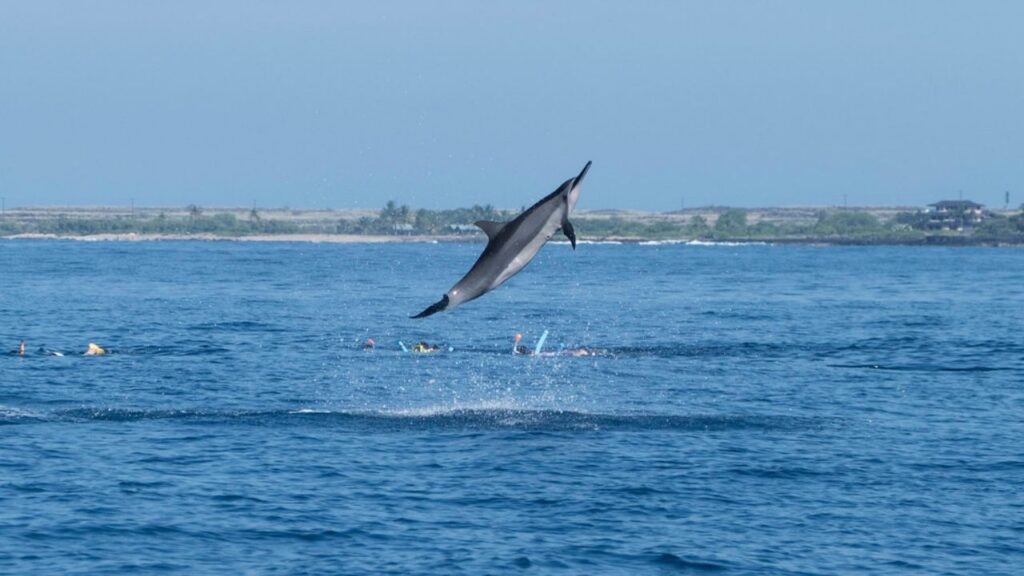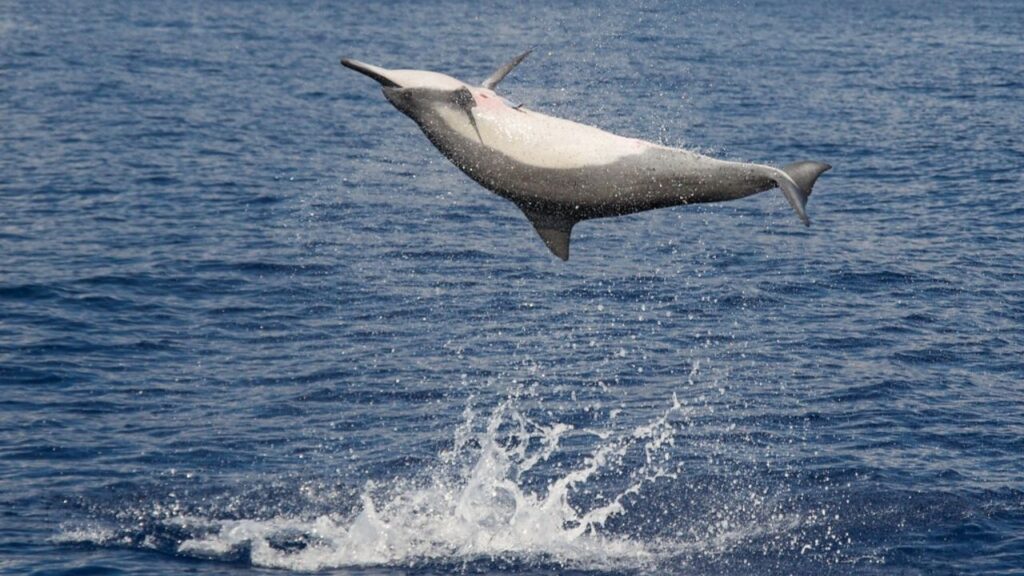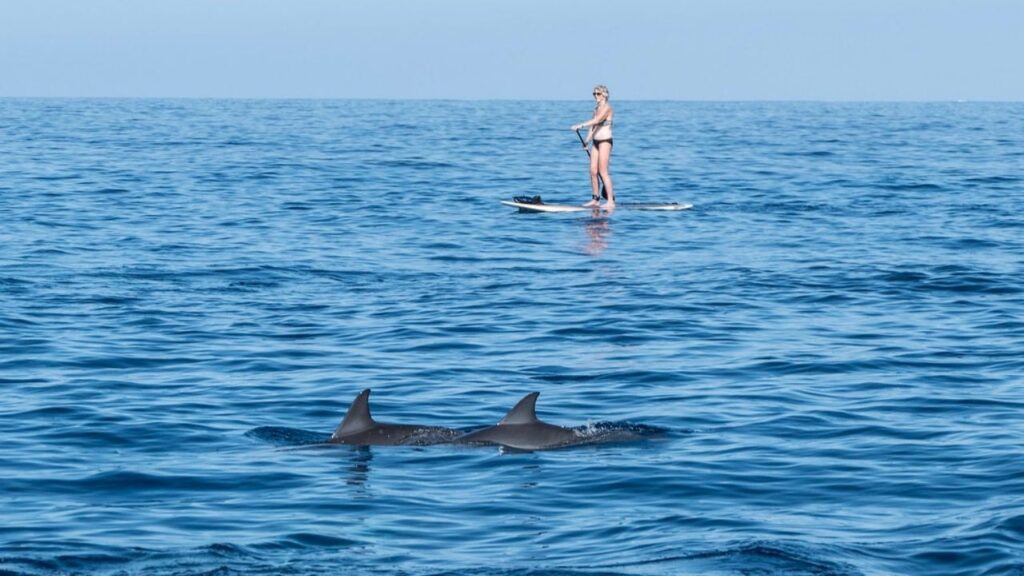
Are you looking for captivating insights into the fascinating world of Hawaiian spinner dolphins? Join us as we explore 10 intriguing facts about these marine mammals, known for their acrobatic displays and playful nature.
Facts About Hawaiian Spinner Dolphins: Hawaiian spinner dolphins are known for their acrobatic spins and leaps, often seen in groups near the Hawaiian Islands.
Table of Contents
- 1 10 Jaw-Dropping Facts About Hawaiian Spinner Dolphins
- 1.1 1. Scientific name: Stenella longirostris
- 1.2 2. Feed mainly on small fish, squids, and shrimps
- 1.3 3. Females mature at 5.5-10 years, males at 10-12 years
- 1.4 4. Dorsal area is deep gray, sides lighter
- 1.5 5. Sleep with only half of their brain
- 1.6 6. Breathing without surfacing by blowing bubbles
- 1.7 7. Can make rotations in the air while spinning
- 1.8 8. Spinning is believed to clean bodies
- 1.9 9. Known for aerial somersaults, head and tail slaps
- 1.10 10. Snorkel tours provide close encounters
- 2 Frequently Asked Questions (FAQs)
- 3 Conclusion
10 Jaw-Dropping Facts About Hawaiian Spinner Dolphins
1. Scientific name: Stenella longirostris
The scientific name of the Hawaiian spinner dolphin is Stenella longirostris. These dolphins belong to the family of oceanic dolphins, which includes various species found in open waters around the world.
Within the species Stenella longirostris, there are four recognized sub-species, each with slight variations in physical characteristics and distribution.
These sub-species are often referred to as long-snouted or Gray’s dolphins. While they share many similarities, such as their spinning behavior and feeding habits, each sub-species may have distinct genetic traits and ecological preferences.
2. Feed mainly on small fish, squids, and shrimps
Shrimps, squids, and tiny fish make up the main food of Hawaiian spinner dolphins. They are expert hunters who can find prey in the wide oceanic habitat by employing echolocation.
These dolphins are renowned for their capacity to dive to astounding depths of more than 250 yards in pursuit of food, exhibiting their versatility and resourcefulness.
Because they feed nocturnally, spinner dolphins prefer to hunt and graze at night, when their prey is most active. [Facts About Hawaiian Spinner Dolphins]
They can maximize their chances of successful hunting and optimize their energy consumption through this eating behavior.
3. Females mature at 5.5-10 years, males at 10-12 years
Male spinner dolphins become fertile between the ages of 10 and 12 years, while females normally attain sexual maturity between the ages of 5.5 and 10 years. Resources and environmental conditions are two possible influences on this difference in maturation age.
Spinner dolphins mate after they reach sexual maturity, usually during designated breeding seasons. For about ten months, a female spinner dolphin gives birth to a single youngster during her gestation period.
The survival of the offspring depends on parental care, with moms giving the young dolphin protection and sustenance until they can support themselves.
The population dynamics and genetic diversity of spinner dolphin populations in their natural habitat are influenced by these reproductive techniques.
See Also: Where Do Hawaiian Spinner Dolphins Live?

4. Dorsal area is deep gray, sides lighter
Hawaiian spinner dolphins stand out in the aquatic environment thanks to an alluring combination of physical characteristics.
Their unique coloring is produced by the contrast between their lighter gray flanks and their deep gray dorsal section. [Facts About Hawaiian Spinner Dolphins]
These dolphins have a white underbelly with tiny white dots. This particular coloring has two functions: communication and concealing.
They are protected from potential predators by their ability to blend in perfectly with the water environment thanks to their many colors of gray.
The white patches might also be important for social interactions, helping to identify each person in the pod.
5. Sleep with only half of their brain
The sleeping habits of spinner dolphins show an amazing adaptation. Spinner dolphins sleep in unihemispheric slow-wave sleep, as opposed to humans who sleep in deep sleep during which both hemispheres of the brain are at rest.
This implies that only one hemisphere of their brain is ever asleep, with the other always functioning. [Facts About Hawaiian Spinner Dolphins]
Because of their peculiar sleeping habits, they are able to remain somewhat conscious of their environment, which helps them stay awake long enough to breathe and see possible threats.
For these marine creatures, being able to rest half of their brain while still performing basic tasks is crucial to their survival.
6. Breathing without surfacing by blowing bubbles
Hawaiian spinner dolphins have developed an amazing way to breathe without having to come to the surface all the time.
They exhale rapidly and release bubbles when they get close to the water’s surface. They have evolved a clever adaption that allows them to stay underwater for extended periods of time while effectively controlling their oxygen intake.
Spinner dolphins maximize their time spent underwater by using this breathing strategy, which improves their hunting and overall survival.
This adaptation, which enables the marine mammals to flourish in their turbulent maritime habitat, demonstrates the extraordinary intelligence and ingenuity of these creatures.
See Also: What Do Hawaiian Spinner Dolphins Eat?

7. Can make rotations in the air while spinning
The captivating acrobatic displays of spinner dolphins, which feature a range of amazing feats like spinning, somersaults, head and tail slap, and spy hops, are well known.
In the social and ecological context of the dolphin, these dynamic displays have several meanings in addition to being visually appealing.
For example, somersaults and spins might be used to convey excitement or group cohesion to other members of the pod. [Facts About Hawaiian Spinner Dolphins]
Dolphins can demonstrate their territoriality or aggressiveness by slapping their heads and tails, and they can spy hop to see what’s above the water.
8. Spinning is believed to clean bodies
Many suggestions have been put up, but the precise causes of spinner dolphins’ spinning activity are still up for debate in the scientific community.
Spinning is thought to help remove parasites from the dolphin’s skin because it moves quickly enough to knock unwanted hitchhikers off its skin.
Another theory is that dolphins spin to demonstrate their agility and fitness to prospective partners as a sort of mating display.
Spinning could also serve as a communication tool within the pod, allowing people to share information about where they are, how cohesive the group is, or their social standing.
In the end, spinning might just be a happy and joyful gesture that captures the dolphin’s natural interest and enthusiasm for life.
9. Known for aerial somersaults, head and tail slaps
Spinner dolphins are incredibly nimble aerial performers, frequently completing up to seven full spins in the air when engaging in spinning behavior.
The dolphin’s athleticism, dexterity, and understanding of its aquatic habitat are demonstrated by these aerial feats. [Facts About Hawaiian Spinner Dolphins]
Spinner dolphins demonstrate their athletic prowess and engage in social relationships and habitat exploration through their graceful and precise leaping and spinning.
Those who are fortunate enough to witness these magnificent aerial displays, which showcase the intricacy and beauty of marine life, will never forget the experience.
See Also: Can You Swim With Dolphins In Kauai?

10. Snorkel tours provide close encounters
Although there is never a guarantee, snorkel tours to places like Lanai and other coastal locations frequently meet spinner dolphins.
Nature lovers can witness spinner dolphins in their native environment, participating in their typical interactions and behaviors, by taking one of these tours.
Seeing these magnificent animals up close allows for a deeper connection to the marine environment and a greater understanding of the delicate balance of ocean ecosystems.
They can be seen engaging in lively spins and leaps as well as peaceful moments of repose.
These experiences serve as a timely reminder of the value of conservation initiatives aimed at preserving spinner dolphins and their habitats for the enjoyment of future generations.
Frequently Asked Questions (FAQs)
Can Spinner Dolphins Be Found In Other Parts Of The World Besides Hawaii?
Yes, spinner dolphins inhabit tropical and subtropical waters globally, including the Pacific, Indian, and Atlantic Oceans, and the Mediterranean Sea. However, Hawaiian spinner dolphins are distinct in their behaviors and habitat choices.
Are Spinner Dolphins Endangered Species?
While spinner dolphins aren’t endangered, they face threats like habitat degradation, fishing gear entanglement, and human disturbance. Conservation efforts are crucial for their long-term survival.
Is It Safe To Swim With Spinner Dolphins?
Swimming with spinner dolphins can be enjoyable, but it’s important to do so ethically. Following guidelines, such as maintaining distance and avoiding direct interaction, ensures a positive experience for both humans and dolphins.
Conclusion
Finally, by delving into the world of Hawaiian spinner dolphins, hopefully, you have gained a deeper appreciation for these remarkable marine mammals.
Their fascinating behaviors and adaptations showcase the enchanting world beneath the waves.
Whether glimpsed from afar or encountered up close, spinner dolphins continue to captivate and inspire awe in all who encounter them.

Mr. Das, a certified pharmaceutical scientist, holds a Bachelor of Science in Pharmaceutical Sciences and passionately contributes to dolphin conservation as a member of the committee in Bangladesh.


